What Does NATO Stand For? The History of How — and Why — NATO Was Created
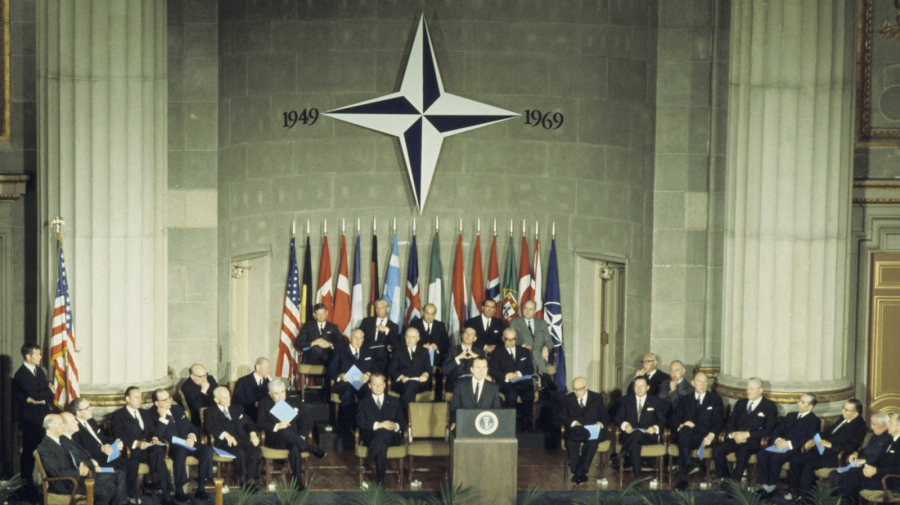
If you’ve been tuning into the news lately, you’ve probably heard the term “NATO.” As you may know, NATO stands for North Atlantic Treaty Organization and comprises 30 individual countries, all of which work together to accomplish a set of common goals.
First formed in the late 1940s, NATO remains a powerful force in the world today. Here, we’ll take a look at NATO’s origins, the countries that are currently members of the organization and the role NATO plays in our world’s current geopolitical climate.
NATO Origins: The Aftermath of World War II
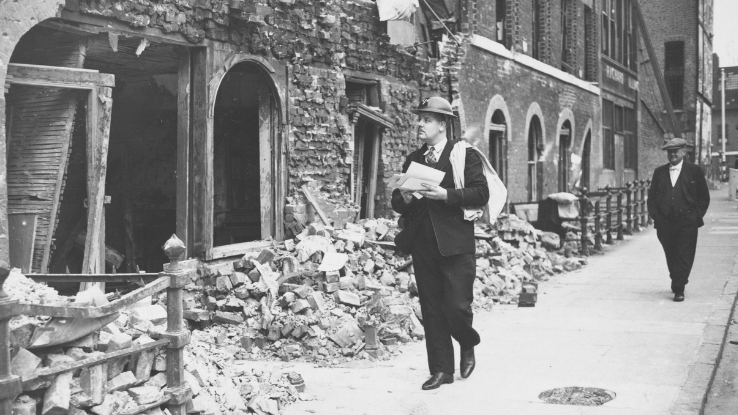
When World War II ended in 1945, much of Europe’s infrastructure had been destroyed and its economy had collapsed. The war was devastating for European countries in other ways, too; the conflict resulted in the deaths of 36.5 million people and left millions more displaced and unhoused. In addition to this economic and political uncertainty across Western Europe, some countries were concerned about a potential resurgence of Naziism in Germany and the spread of communism from the Soviet Union.
Although it experienced immense civilian and military casualties throughout the war, the United Soviet Socialist Republic (USSR) — a communist state made up of 15 republics we know today as Russia, Belarus, Moldova and several others — had built up a great deal of military power during WWII. Its alliance with the United States and Great Britain, which was uneasy throughout the war, began to crumble, especially as the U.S. and USSR struggled to reach an agreement about how to occupy and rebuild Germany. This resulted in the gradual division of Germany into two sectors. In the late 1940s, one eventually became the democratic, U.S.-aided West Germany, and the other became the USSR-controlled East Germany.
With much of Europe economically and militarily unable to defend itself against further USSR expansion, fear began to spread that if the USSR continued these efforts, many European countries might not be strong enough to resist. In 1947, the United States devised the Marshall Plan, or the European Recovery Program, which provided billions of dollars in aid to help Europe rebuild. Ultimately, though, the U.S. and Western European countries suspected that they needed a stronger, more cooperative solution.
The North Atlantic Treaty of 1949
After months of discussion and planning, several democratic Western European countries decided to form a powerful alliance that could ensure the security of its members. In 1949, the representatives of 12 states, including the U.S., Canada, Belgium, Denmark, France, Iceland, Italy, Luxembourg, the Netherlands, Norway, Portugal and the United Kingdom, formed NATO with the signing of the North Atlantic Treaty.
One of the cornerstone sections of the treaty is Article 5, which defines the shared principle of “collective defense” for member nations — that a military attack on any of the member countries would be considered an attack on them all. From that point on, it became known that attacking any NATO country meant encountering the military support the others would send to defend it.
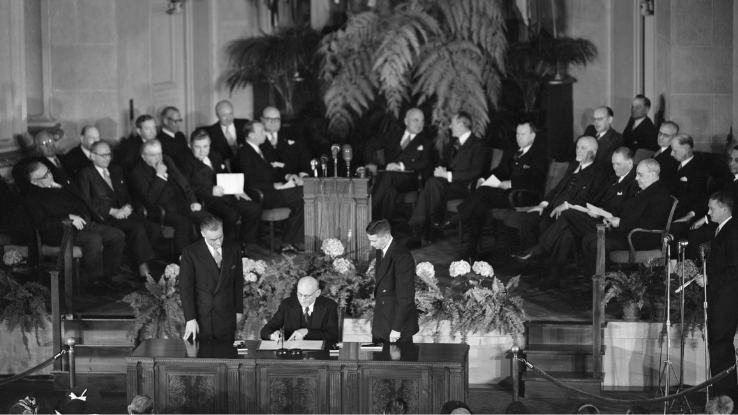
The USSR didn’t respond positively to the news of NATO’s formation. In 1955, the USSR and several other Soviet satellite states — Albania, Bulgaria, Czechoslovakia, Hungary, Poland, Romania and East Germany — formed an alliance called the Warsaw Treaty Organization (WTO), or Warsaw Pact. The Warsaw Pact was meant to serve as an equivalent to NATO.
These two powerful alliances directly contributed to the growing rivalry that fueled the Cold War. Ultimately, although the WTO lasted throughout the Cold War, it was formally dissolved in 1991 — the same year the USSR disbanded. NATO, however, has continued to grow, and it counts 30 different countries among its members today.
Responding to Conflict: The Roles of NATO Members and Partners
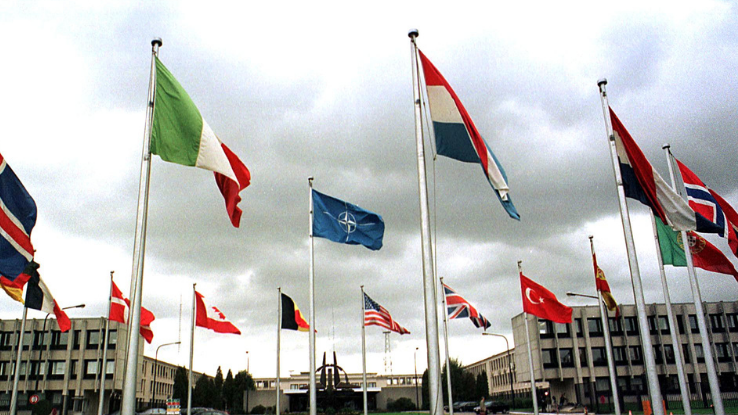
Russia’s invasion of Ukraine in February 2022 led people around the world to question the implications of possible NATO involvement. But the answer to whether or not NATO would become involved in the conflict comes down to the difference between NATO member countries and a group of countries commonly referred to as “NATO partners.”
Whereas member countries have pledged their full military support, NATO partners are countries that have not done so but that cooperate with the organization’s peacekeeping objectives. Ukraine is a partner country, which was why the 2022 Russian invasion of Ukraine didn’t immediately trigger a military response from NATO’s 30 member countries. The conflict has presented a difficult situation for NATO. Because Ukraine isn’t a NATO member, Russia didn’t technically declare war on any of the countries that are part of the alliance. NATO member states were unable to collectively respond in the same way they could if Ukraine was a full member.
That said, NATO regards Ukraine as a key partner. NATO countries have condemned the Russian invasion and have responded by inflicting strong sanctions intended to impact Russia’s economy. Additionally, NATO allies and individual member states have provided Ukraine with humanitarian aid, supplies and financial assistance. Many NATO countries bordering Ukraine have also welcomed war refugees.
What Does NATO Do Outside of Military Defense?
NATO’s primary goal has always been to safeguard the freedom and stability of its members while also working to maintain global peace. When it was first formed, NATO was largely a military defense alliance meant to shield Europe and North America from the threat of Soviet attack.
Even after the Cold War ended, however, NATO members continued to honor the initial treaty, largely because it had proven so powerful. By creating an enduring alliance between the United States, Canada and much of Europe, NATO has built a lasting legacy of safeguarding democracy. But NATO doesn’t exclusively champion democratic values through the use of military force.
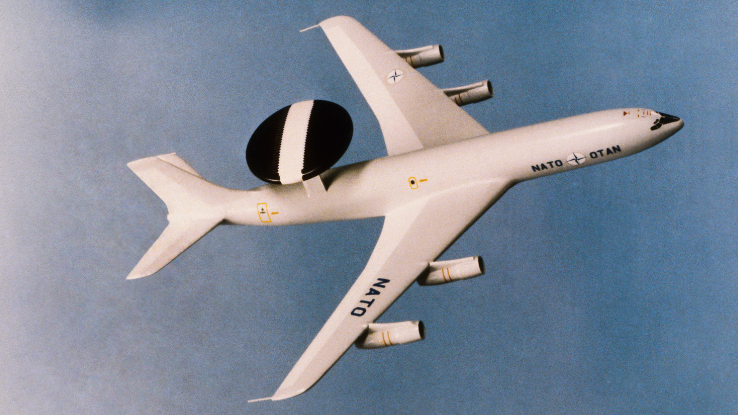
It also strives to be a means of achieving and maintaining peace on a global scale. Representatives from member and partner countries meet at the NATO headquarters in Belgium to find answers to pressing global issues. By promoting discussion, diplomatic solutions and consensus-based decision-making, NATO is committed to actively helping avoid conflict whenever possible.
The world has become more of a global society than ever before, and NATO is a place where nations can discuss and pursue solutions to international issues that affect them all. These issues have evolved and today can concern everything from cybercrime to coordinated crisis-response efforts. NATO has also led to new partnerships and networking opportunities for countries that share the common aims of peace and security.





